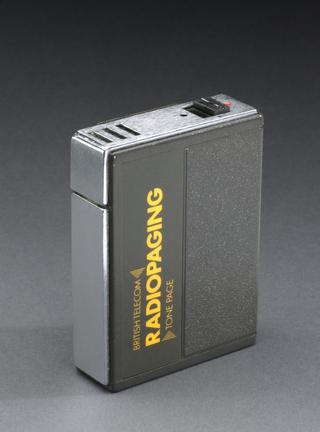
200 series dial telephone, 1925-1935
- maker:
- General Post Office










200 series dial telephone, black, dial marked with letters and numerals, unknown maker for the General Post Office, England, 1925-1935.
The introduction of Bakelite and other plastics meant that the Post Office could offer telephones in new designs. The 200 series was introduced in 1934, and remained in production until 1957. Improved transmitters were combined with the receiver in a more convenient single handset. The bell for the phone was housed in a separate wall-mounted box. An alternative bell case was also developed which could be used as the base of the telephone.
Details
- Category:
- Telecommunications
- Object Number:
- 1985-689
- Materials:
- bakelite, metal (unknown) and textile
- Measurements:
-
overall: 150 mm x 300 mm x 220 mm, 1.721 kg
- type:
- telephone




